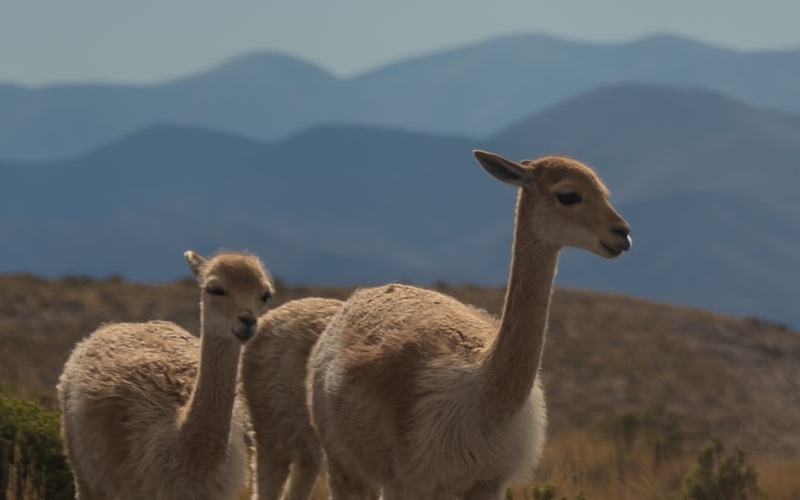Vaccines are in arms, state governments have largely stuck to their reopening promises, the Federal Government is keen to get migrants back, and people are travelling again.
With planes coming in from the United States, the United Kingdom and all over, which countries offer a good deal on foreign currency? It's been an up-and-down year for the Australian Dollar - also known as the Aussie Battler.
We’ve calculated how the Aussie Dollar has performed over the past year, as well as provided a reference point using The Economist’s 'Big Mac Index' so you can get a feel for how expensive things are in that country. (The Economist says a Big Mac costs $6.55 in Australia). Global inflation concerns means a Big Mac could be much more expensive in a country compared to a year ago.
Of course, we haven’t compared all countries, as we don’t envision many Aussies heading to South Sudan any time soon, for example, so here are a few of the more popular destinations the AUD has performed well against in the past year. Keep in mind that exchange rates can and do change all the time.
The following exchange rate assessments were made on 22 November 2021.
Advertisement
In the market for a personal loan? The table below features unsecured personal loans with some of the lowest interest rates on the market.

- Interest rates start at 14.95% and could be as high as 27.95% based on your personal circumstances and loan term
- Australian residents and citizens only
- Personal Loans from $3,000 to $25,000, with loan terms ranging from 25 - 48 months
- Terms, Conditions and Lending Criteria apply
South African Rand - ZAR

The AUD is up a modest 1.06% on the Rand compared to a year ago to now purchase 11.41R. A Big Mac costs 33.50R (approximately AUD $2.95) - one of the cheapest countries on the planet in which to purchase the burger.
Mexican Peso - MXN

The AUD now buys 15.10 MXN - up 2.79% on a year ago. A Big Mac costs 64 pesos (approximately $4.20).
Brazilian Real - BRL

The AUD is up 3.56% against the BRL to now purchase 4.07 reais. A Big Mac costs 22.90 reais (approximately $5.67).
Colombian Peso - COP

The AUD is up 5.18% against the COP, now purchasing 2,837.98 pesos. A Big Mac costs 12,950 pesos (approx $4.54).
South Korean Won - SKW

The AUD is up 5.49% on the won, purchasing 860.60. A Big Mac costs 4,600 won, or approximately AUD $5.35.
Hungarian Forint - HUF

The AUD is up 6.53% against the HUF, now purchasing 236.23 forints. A Big Mac costs 900 forints (AUD $3.78) if you're hungry.
Chilean Peso - CLP

The AUD is up 7.44% against the CLP, now purchasing 600.58. A Big Mac costs 2,990 pesos - approximately AUD $5.00.
Japanese Yen - JPY

The AUD is up 9.03% against the Yen now purchasing Y82.80. A Big Mac costs 390 Yen, or approximately AUD $4.68.
Argentine Peso - ARS
The AUD is up a massive 24.08% against ARS, now purchasing 72.86 pesos.
Two years ago, the AUD was purchasing less than 30 pesos, but it should be noted that Argentina is currently experiencing very high and sustained inflation levels of around 40-50%, which devalues the currency.
A Big Mac costs 380 pesos or approximately AUD $5.23.
Turkish Lira - TRY

The AUD is up 44.54% against the TRY, now purchasing 8.08 lira. A Big Mac costs 19.99 lira in Turkey (just over AUD $2.00) - one of the cheaper countries to purchase the burger.
Note that this figure should be taken with a grain of salt as Turkey is currently experiencing high levels of inflation, around 18-20% per annum.
Costs and Considerations of Exchange Rates
There’s a few considerations to make before setting off to the countries with the most favourable exchange rates or the cheapest Big Macs.
International Transaction Fees
One of the main considerations is the fact that this comparison is using what’s called the 'spot rate', which is what you see on TV or on Google when looking at exchange rates. Your debit card or credit card may offer a poorer exchange rate or tack on extra fees for overseas use.
That’s why it could be a good idea to look into debit or credit cards with no international transaction fees, as well as no ATM fees.
Economic Conditions
Keep in mind that weak currencies may be that way because of its nation’s high inflation rates. Take Argentina for example, with its 40-50% inflation rate, as well as Turkey, which hovers around 20%.
This means that prices of goods can fluctuate wildly, and your Big Mac may cost a lot more in the future. High inflation could be due to political or economic instability, usually as a result of trade deficits and governments devaluing their countries' currencies to make their exports more attractive.
The Big Mac Index: A Flawed Metric?
While the Big Mac Index is a fun way to look at what’s called 'purchasing power parity' to determine like-for-like cost of goods in different countries, there are a few flaws. One of the biggest ones is that a country may have high taxes on fast food or sugary drinks, thus disproportionately inflating the price. The second flaw is that countries dominated by different religions may limit or ban the use of beef, thus influencing the Big Mac Index. The third flaw is that regional differences exist: a Big Mac may be priced differently in New York City compared to Little Rock, Arkansas for example. The fourth is countries may have to import ingredients used to make a Big Mac, inflating the price. The Big Mac Index is a useful guide, but there’s more to consider when it comes to travel costs.
Savings.com.au's two cents
The Aussie dollar has taken a beating against many currencies in the last few years - both major and minor. However, it has experienced a slight surge against currencies in the wake of the pandemic.
While it’s useful to look at countries where our dollar is performing strongly, it’s not the be all and end all of travelling. There’s a lot of other considerations to make, and just because a country is cheap doesn’t necessarily make it enjoyable or even safe to travel to. While getting more bang for your buck travelling to these destinations is tempting, it could be a good idea to pick a place you actually want to travel.
Article first published 12 February 2020, last updated 22 November 2021.
Head Photo by Christine Roy on Unsplash
South Africa: Photo by KYLE CUT MEDIA on Unsplash
Mexico: Photo by Tanja Cotoaga on Unsplash
Brazil: Photo by Raphael Nogueira on Unsplash
Colombia: Photo by Ricardo Gomez Angel on Unsplash
South Korea: Photo by Cait Ellis on Unsplash
Hungary: Photo by Dan Novac on Unsplash
Japan: Photo by Su San Lee on Unsplash
Chile: Photo by Pablo García Saldaña on Unsplash
Argentina: Photo by Toimetaja tõlkebüroo on Unsplash
Turkey: Photo by Daniil Vnoutchkov on Unsplash









 Brooke Cooper
Brooke Cooper

 Harrison Astbury
Harrison Astbury
 Alex Brewster
Alex Brewster

